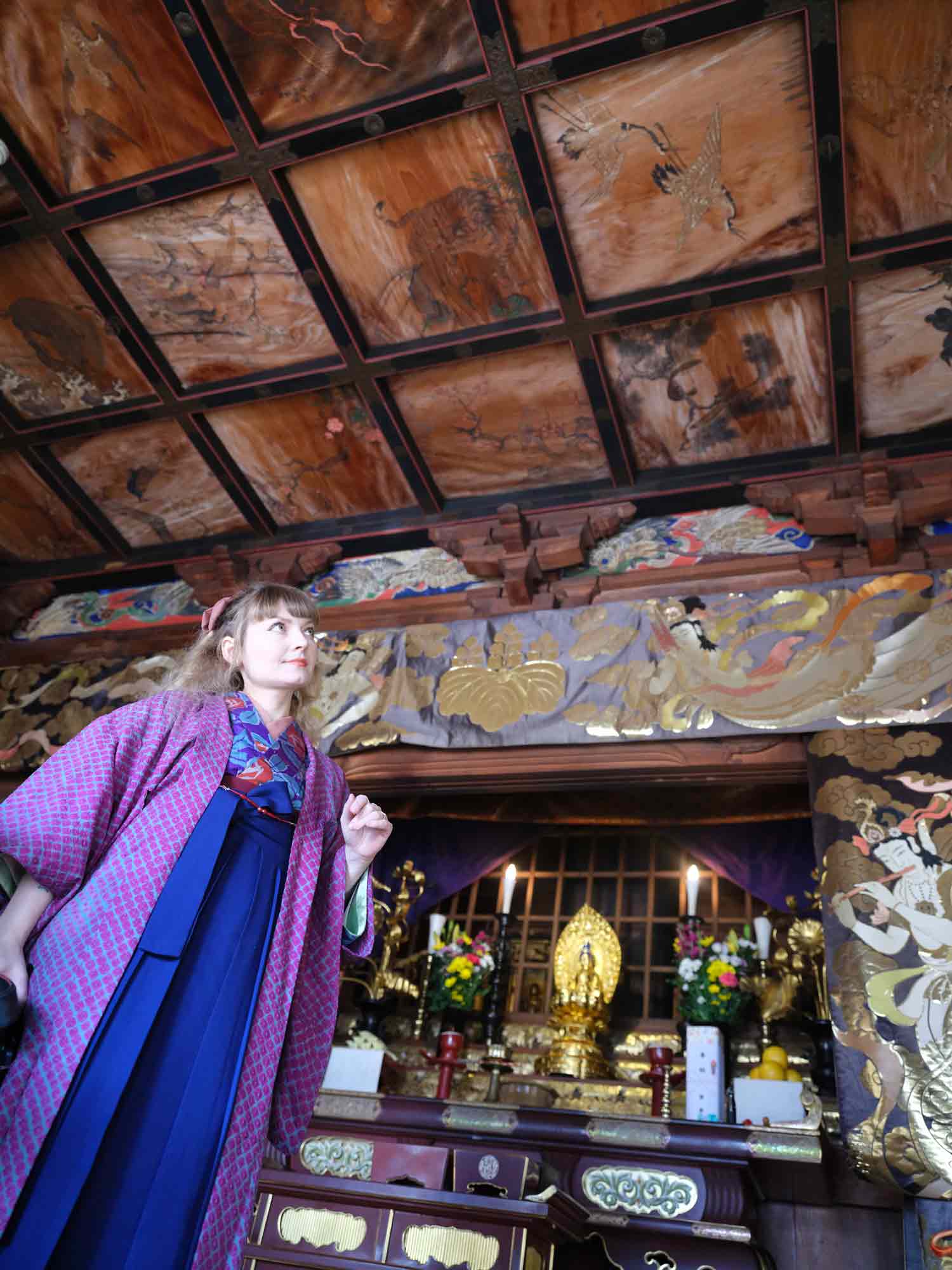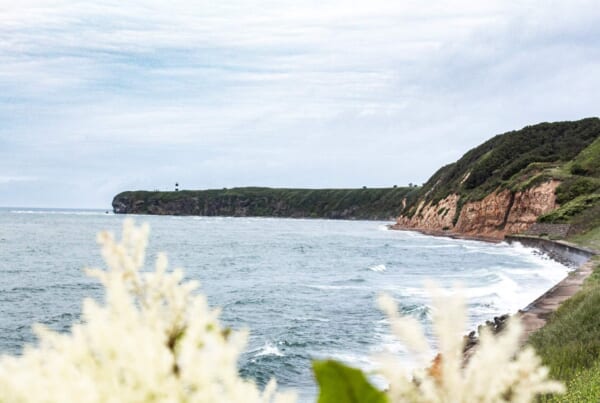Japan hosts many unique cultural and natural sites, spread to all 47 prefectures, on its relatively modest size land. Some of these sites – Tokyo, Kyoto, Osaka, Hakone – enjoy a great level of global fame and are often referred to as the Golden Route of Japan. There are, however, many other less explored sites and experiences in Japan awarding its visitors with equally captivating and often more secluded experiences. Hokuriku Arch pass aims to introduce international visitors to the New Golden Route of Japan and offers the opportunity to explore these lesser-known yet fascinating alternative destinations in Japan.
The destinations covered by the pass represent a perfect mixture of the best experiences that Japan has to offer. It covers destinations rich in cultural sites, urban experiences, natural wonders, and unique culinary experiences. This is the first part of our guide, covering Tokyo, Saitama, Gunma, and Nagano, and introducing some of the selective experiences and sites that can now be easily and affordably accessed with Hokuriku Arch Pass.
This is Part 1 of a 3 part series of articles about the New Golden Route, a part of Japan conveniently accessed by the Hokuriku Arch Pass. To read the other 2 articles in the series, follow these links:
What is Hokuriku Arch Pass?
Hokuriku Arch Pass is a train pass that allows unlimited week-long travel on Hokuriku Shinkansen trains operated by JR East and JR West. The prefectures covered along the route include Tokyo, Saitama, Gunma, Nagano, Niigata, Toyama, Ishikawa, Fukui, Shiga, Kyoto, and Osaka prefectures. There is an online map on the JR West website indicating each station covered by the Hokuriku Arch Pass. There is also a JNTO catalog of the highlights of the New Golden Route.
The pass is available to visitors to Japan with a temporary visitor entry status and can be used for seven consecutive days. The cost is 25,500 yen for passengers over 12 years old and 12,250 yen for children aged 6-11. The pass can be purchased at ticket offices in Japan or bought online (JR East website or JR West website).
Destinations and Experiences Accessible with Hokuriku Arch Pas
In the first of this series, we’ll introduce you to the experiences and sites along the Hokuriku Arch trail, starting with the electrifying Tokyo and ending it with Nagano’s famous pristine nature.
Tokyo: Enjoy the Capital from High Above While Indulging in Exquisite Cuisine
Tokyo, one of the largest and liveliest metropolises in the world, is home to 23 wards and nearly 14 million residents. The city offers a different world and experience at each corner. In one corner, you are greeted by dazzling neon lights, whereas the next neighbourhood makes you feel like you’re in a small rural town full of character.
The sheer size and the grandeur of Tokyo could only be truly appreciated with a bird’s eye view over the city. Luckily, TOKYO SKYTREE®, one of the world’s tallest towers, offers a similar experience. Visitors to the TOKYO SKYTREE®, located in Sumida ward, can take the elevator to the viewing platform located 350-meters above ground at the observation deck and enjoy the endless panoramic views of Tokyo. In addition, Sky Restaurant 634 (Musashi), located one floor below, enhances this unique visual experience by offering tasty cuisine in an elegant setting.
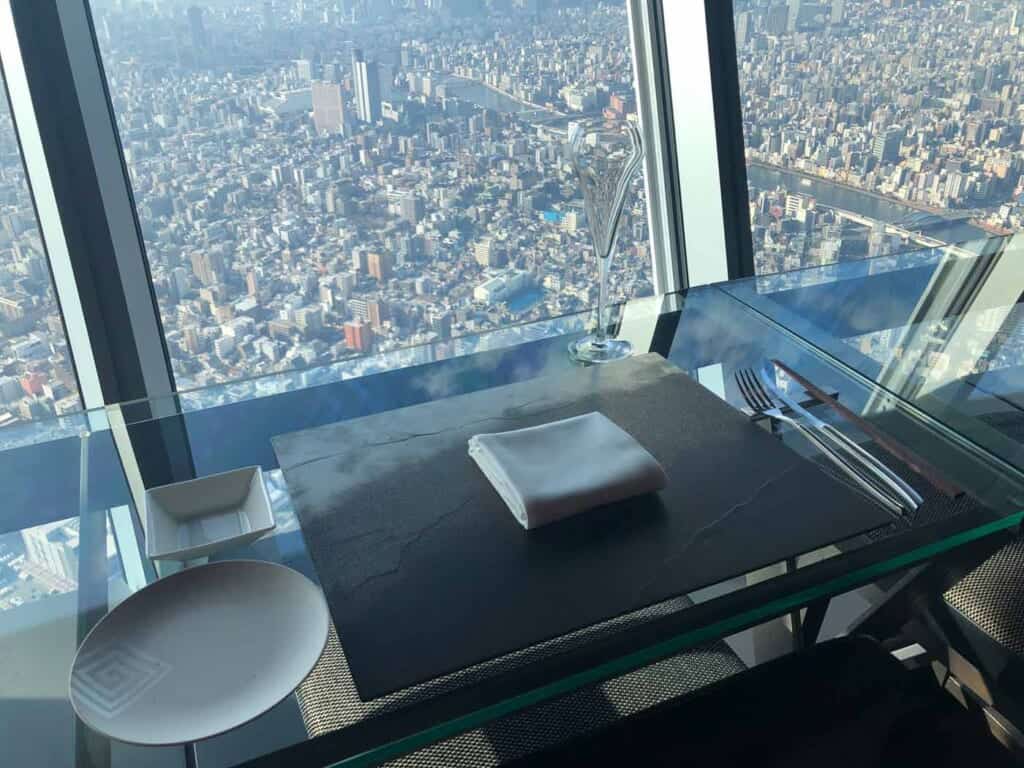
The restaurant is a perfect place for a celebratory dinner to start or end your journey of discovering the New Golden Route of Japan. Sky Restaurant 634 serves both lunch and dinner and offers just the right atmosphere, elegant yet cozy, to enjoy the scenic beauty of Tokyo.
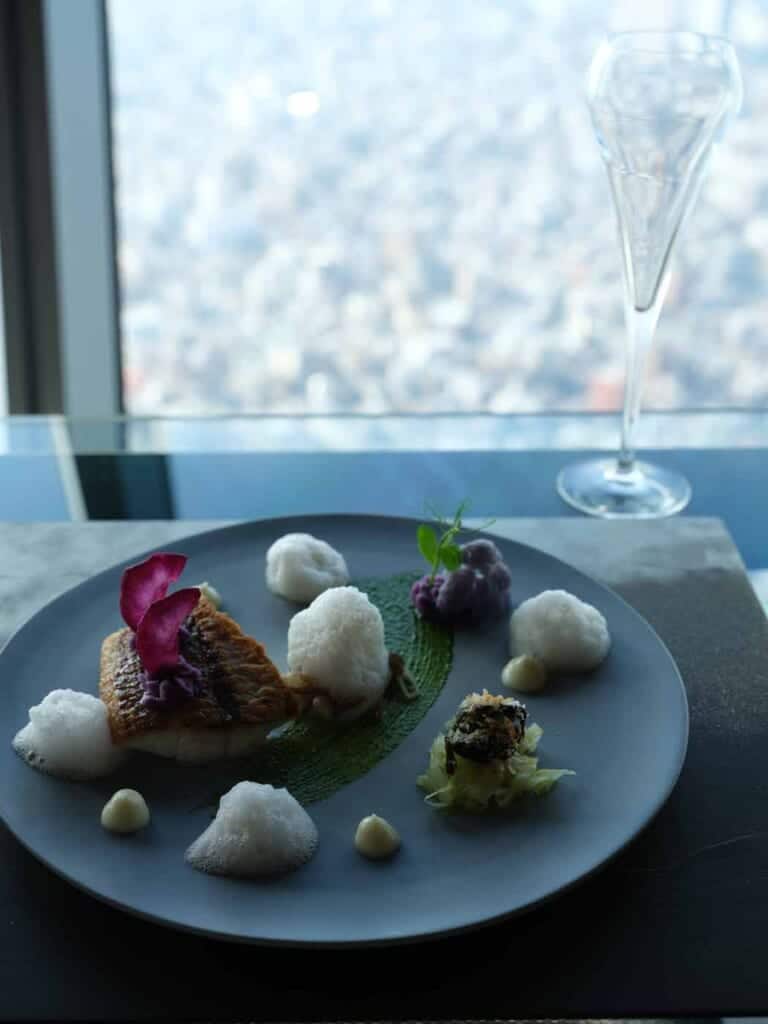

Daytime scenery, on clear days, rewards the visitors with the views of Japan’s highest and the most picturesque mountain — Mount Fuji. For those opting for dinner at Restaurant 634 and enjoying the mesmerizing city lights, starting your evening a little early may be a good idea to catch the sunset over Mount Fuji.
The restaurant is also famous for its tasty cuisine combining French cooking techniques and Japanese cuisine. The restaurant uses a combination of seasonal vegetables and other food ingredients gathered to the metropolis Tokyo. The appetizer menu features unique dishes from both cuisines, such as mussel soup, sayaori sushi, and mince pie made with wagyu beef. The restaurant’s vegetarian risotto is highly praised, while the fish lovers will enjoy Itoyori Fish, golden threadfin bream.
*The contents of the dishes are subject to change without notice.
| Access and visiting info: Tokyo Metro Hanzomon Line, Toei Asakusa Line, and the Keisei Line all have stops at TOKYO SKYTREE® with public and shuttle buses also providing access. Opening hours are from 10:00-21:00 (last admission 20:00). Ticket prices range between 1,800-3,100 yen. For further ticketing info, visit the TOKYO SKYTREE® Official Website. Sky Restaurant 634 requires a reservation and serves lunch between 12 pm and 4 pm (last entry at 2 pm) and dinner between 5:30 pm and 9 pm (last entry at 7 pm). For reservation and pricing, visit the Sky Restaurant 634 Website. |
Explore the Ancient Chichibu Pilgrimage Route in Saitama
Saitama, the neighbouring prefecture of Tokyo, is home to one of the most ancient pilgrimage routes in Japan, which has a long tradition of religious pilgrimage.
The 100km Chichibu Fudasho Pilgrimage Route covers 34 Buddhist temples. The pilgrimage route is thought to exist since the latter half of the Muromachi Period (1336-1573), but most of the temples along the route date even earlier. The route passes through forests, climbs mountain passes and cross small towns with lovely locals, offering a perfect combination of nature, cultural sites and local life.
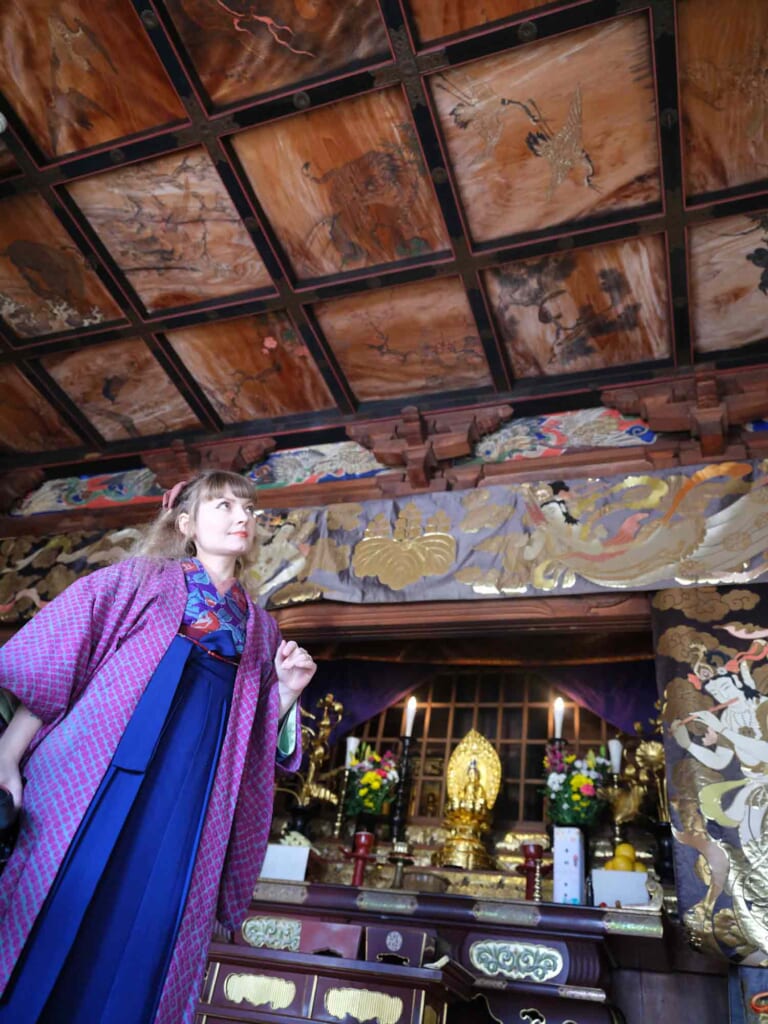
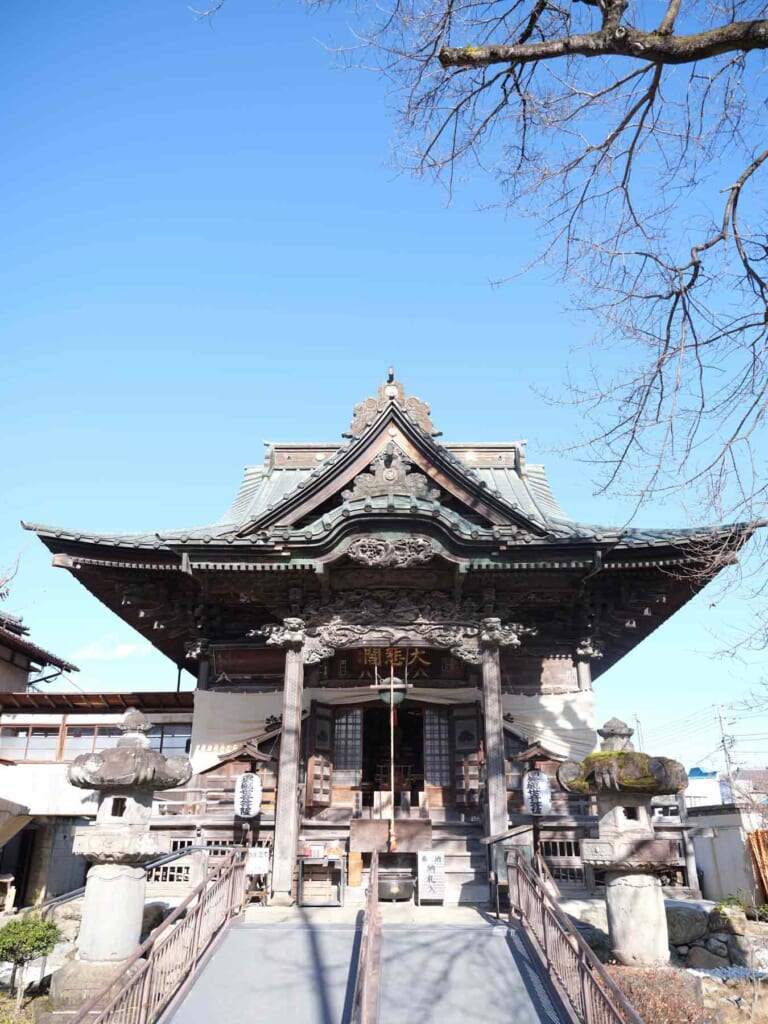
Jigenji Temple (No.13), Saikoji Temple (No.16) and Nosakaji Temple (No.12) are three of the temples along the way with a long history that will please both the temple architecture and history lovers.
Jigen-ji Temple is one of the most easily accessible temples along the pilgrimage route and it is, therefore, a popular place to start the pilgrimage. The temple, with a 780 years long history, is also known as Ameyakushi among the locals. One of the buildings on the grounds is dedicated to the Buddhist god of medicine, drawing visitors from all over Japan looking for overall healing, and more specifically, to improve their eyesight! Once you’re done praying, make sure you also taste the “eye tea” (眼茶) offered for free at the entrance, which, as the name suggests, may help you to avoid reading glasses.
| Access: Take the Yamanote Line from Tokyo Station to Ikebukuro Station (24 min.) and transfer to Seibu Ikebukuro Line Limited Express for Seibu-Chichibu Station (1 h 17 min.), Jigenji Temple is 8 min. walking distance from the station. |
Gunma: Visit Tomioka Silk Mill, a UNESCO World Heritage
You may already be familiar with the silk kimonos of Japan but not know about the UNESCO Heritage factory responsible for some of the finest silk produced in Japan. Tomioka Silk Mill, located in Gunma Prefecture, was built in 1872 during the early Meiji Era (1868-1912) as the first government-run silk factory in Japan. In its listing reasoning, UNESCO credited the factory for its success in making silk into one of the leading industries of Japan and turning the nation into one of the leading silk exporters in the world — marking Japan’s entry into the modern industrialized world.
The factory was seen as a great example of European (mainly French) and Japanese technology and is praised for substantially increasing the quality of silk used in Japan. Together with three related sites the facility involved an integrated manufacturing system starting with egg production and silkworm farming.
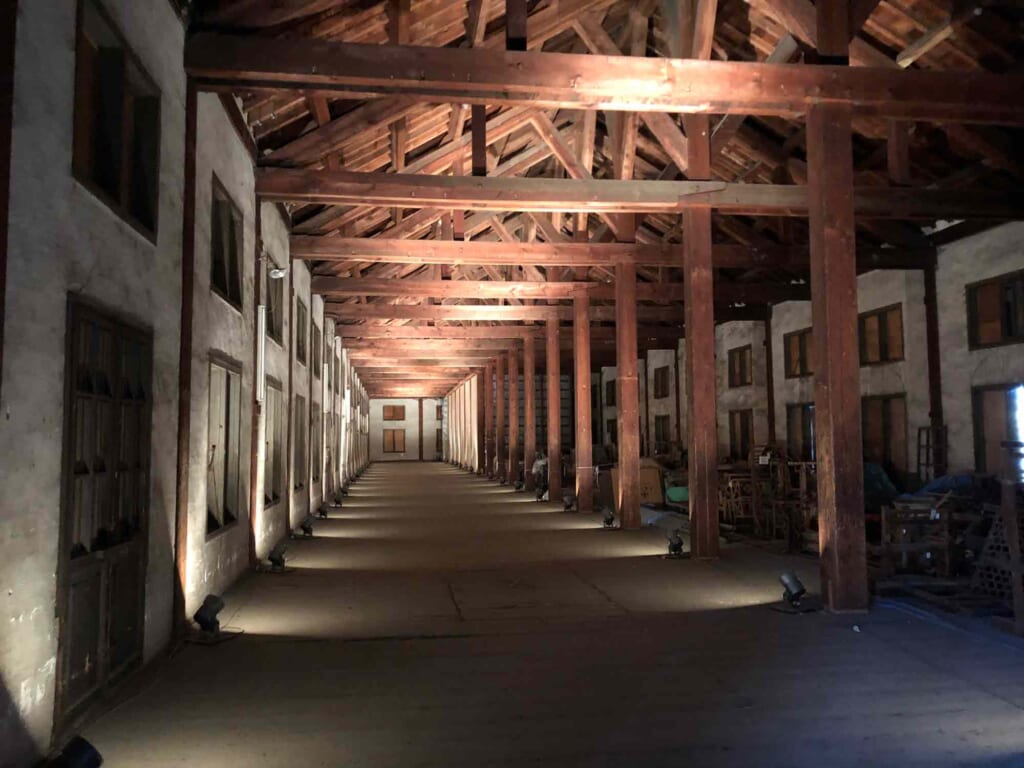
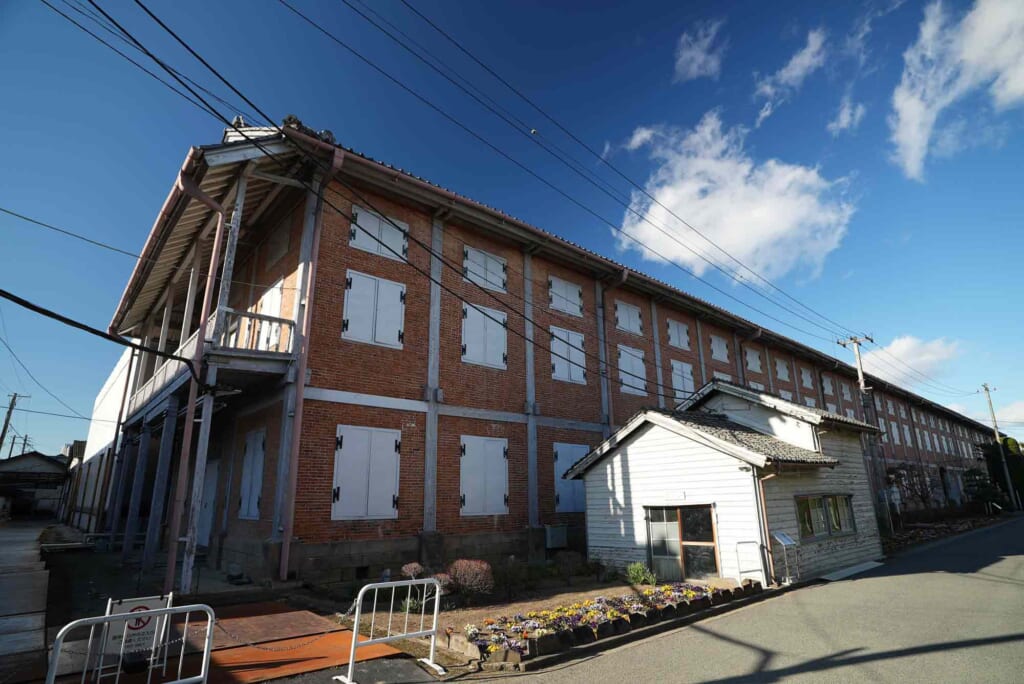
The factory employed 300 women at the time, attracted women from all over Japan who would learn the fine silk-reeling techniques. They later spread the fine technique all over Japan, contributing to the manufacturing techniques used throughout the country.
The factory remained operational for more than 100 years until the 1980s. The building now serves as an impressive museum where visitors can learn about the silk-making process and the unique history behind the operation. The facility also includes displays introducing visitors to life in the factory. These include dormitories used by French and Japanese staff and the home of the French manager of the factory.
| Access and visiting info: Take the Hokuriku Shinkansen from Tokyo Station to Takasaki Station (49 min.) and transfer to Joshin Dentetsu Line for Joshu-Tomioka Station (39 min.). Tomioka Silk Mill is 10 min. on foot. The factory is open daily (except on December 29th to 31st) from 9 am to 5 pm (last admission at 4:30 pm). The entrance fee is 1,000 yen for adults, 250 yen for high school and university students and 150 yen for elementary and junior high school students. For more information, visit the Tomioka Silk Mill Website. |
Nagano: Visit Togakushi Shrine
Not far from Nagano train station, one of the nature-rich winter wonderlands and hiking paradises of Japan, lies the Togakushi Shrine hiding deep in the forests. While it is referred to as a shrine, Togakushi is actually a shrine complex comprised of lower, middle and upper areas and home to five different shrines — Okusha, Chusha, Hokosha, Kuzuryu, and Hinomikosha.
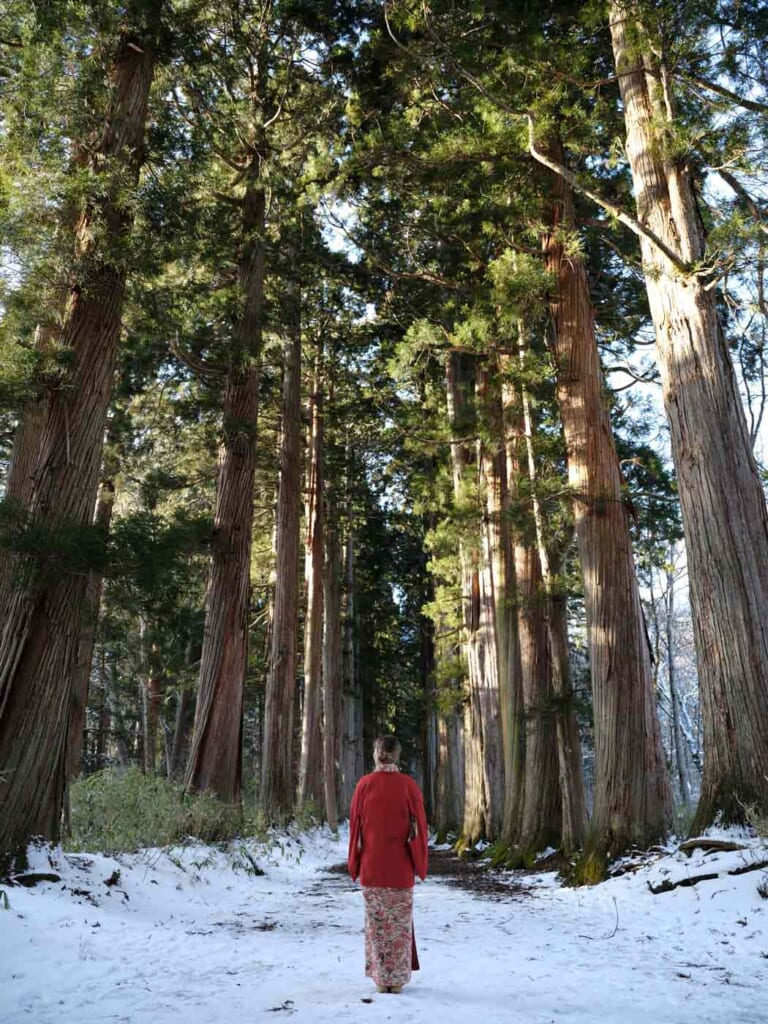
The shrine relates back to an important story from the Japanese mythology of Amaterasu, the Goddess of the Sun. When her brother’s practical jokes were taken too far, the enraged Amaterasu hid in a cave in Kyushu’s Takachiho region, plunging the world into darkness. After a clever ploy of festive dancing by other deities worked to lure the curious goddess out of hiding, the stone door that closed the cave opening was flung aside, all the way to this very spot in Nagano.
The hiking trails surrounded by beautiful nature connect the fives shrines. The trails often guarded by enormous trees are the biggest draws of this large shrine complex, where one needs around four hours to visit all shrines on foot.
| Access and visiting info: Take the Hokuriku Shinkansen from Tokyo Station to Nagano (1h 37 min.) and change to Nagano-Togakushi Loop Line (not covered by Hokuriku Arch Pass) for Koshimizugahara (1h 7 min.). The shrine is a walking distance of the station. |
How to Get to Tokyo, Saitama, Gunma, and Nagano Along the Hokuriku Arch Pass Route
The four sites listed in this article can mostly be easily reached by JR trains covered by Hokuriku Arch Pass with occasional transfer to other train/bus lines.

Hokuriku Arch Pass provides an excellent opportunity to explore both the famous and lesser-known sites of Japan on a one-week-long trip. It is perfect for visitors wishing to go beyond the beaten path.


